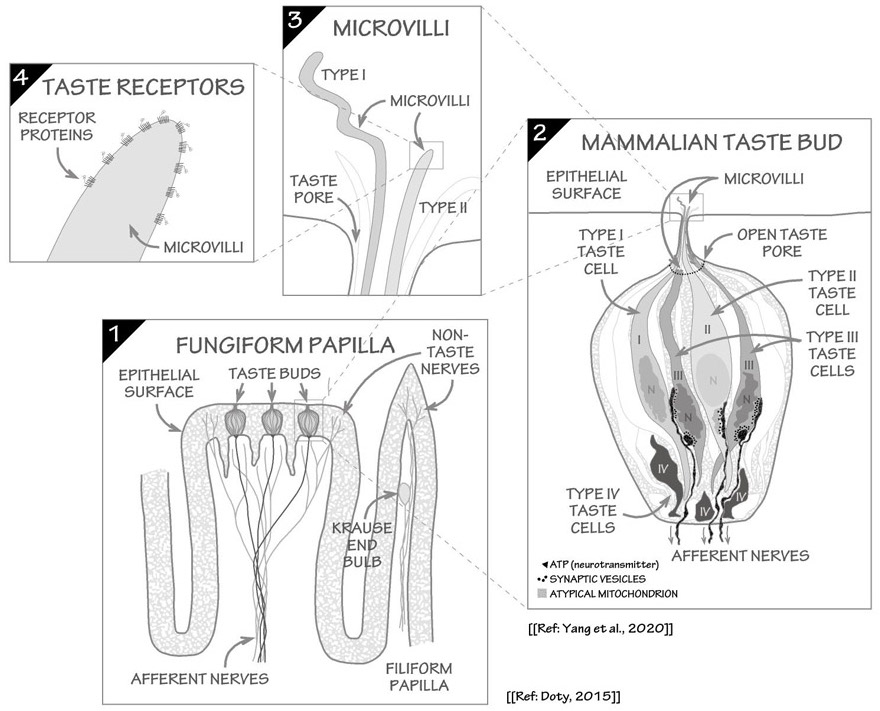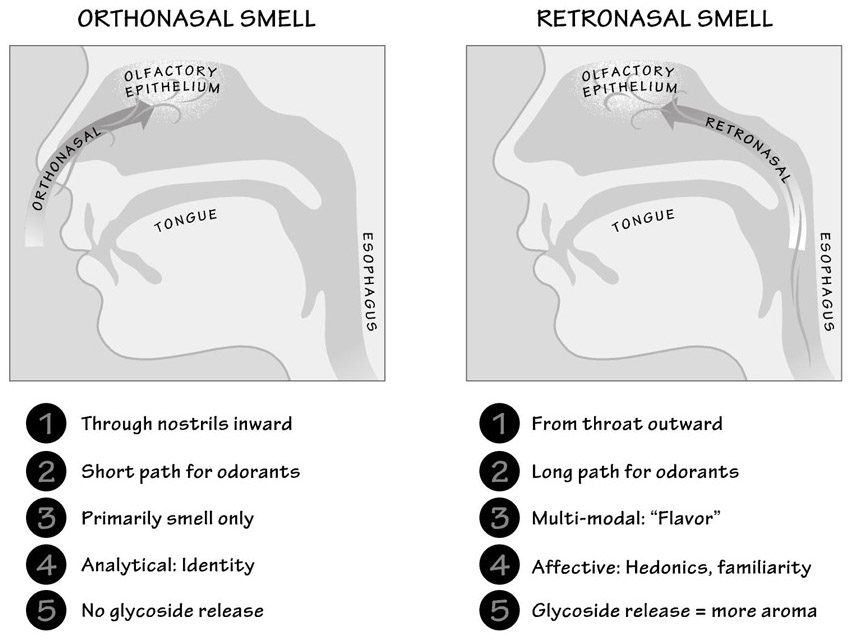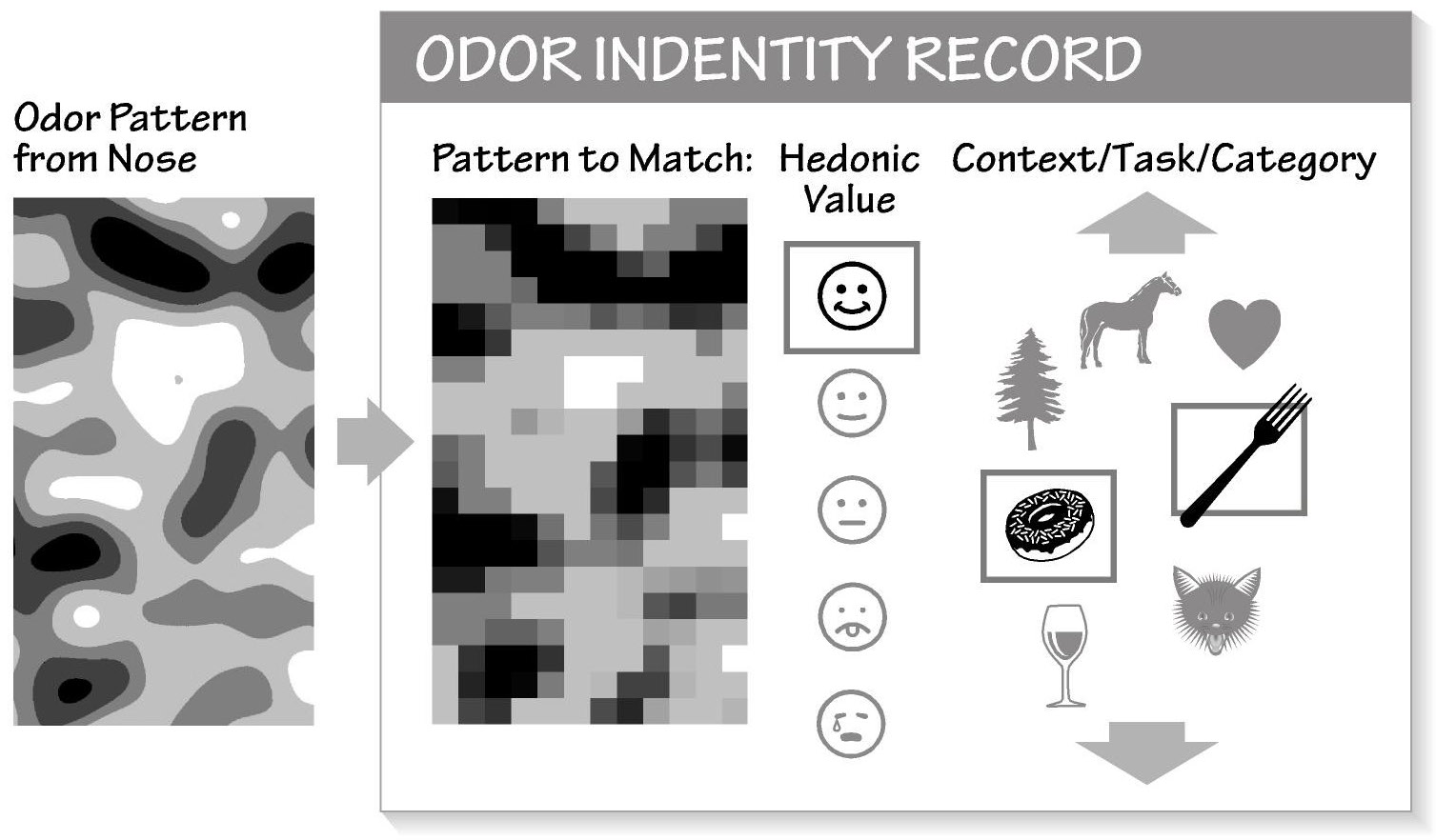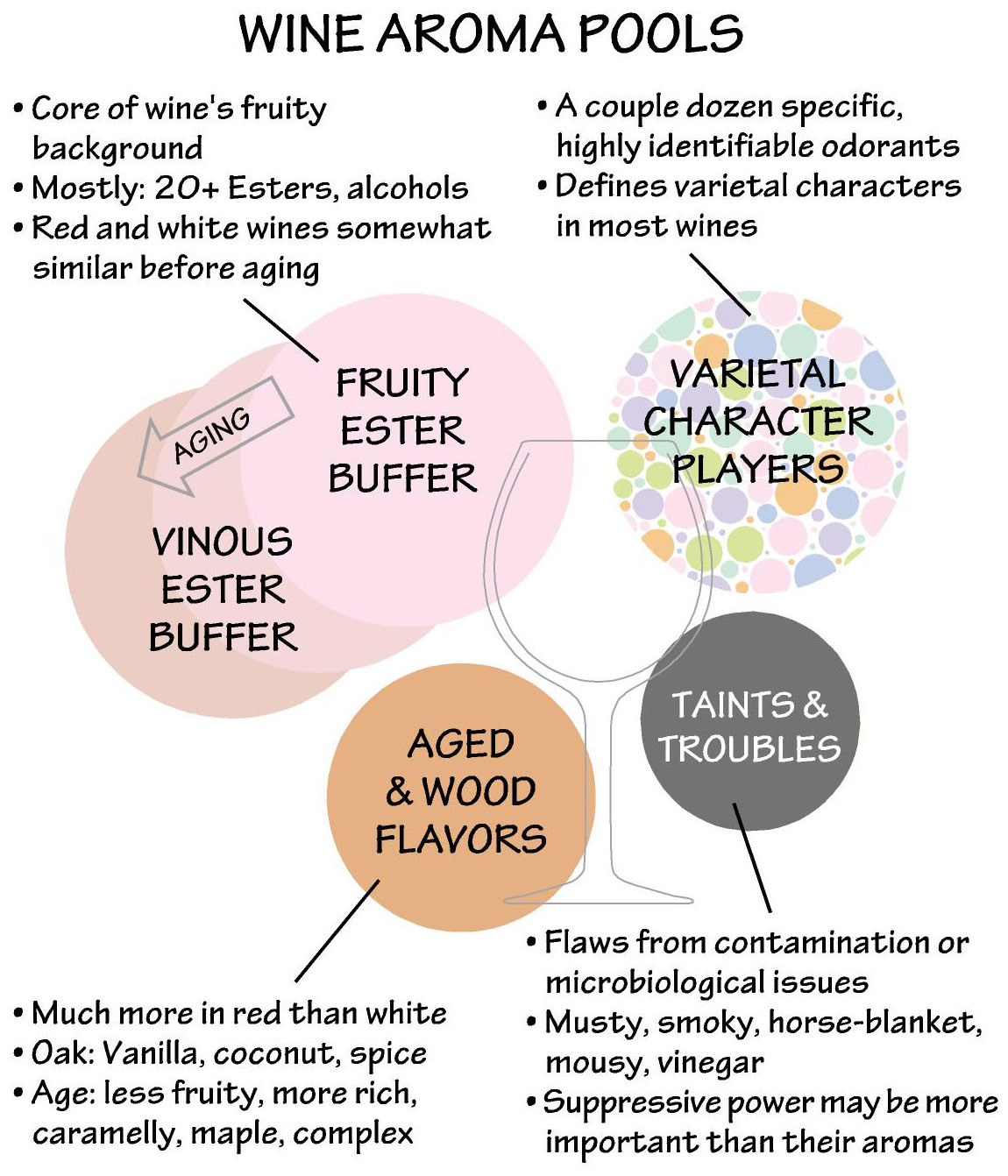Book in Process
Your Tasting Brain
A Sensory Approach to Wine, Beer, and Other Pleasures

Taste, smell and mouthfeel represent fully half of our sensory systems, but we barely notice them most of the time. Still, they can be remarkably potent, unleashing emotions and actions even without our conscious awareness: ecstasy, revulsion, terror, fight, flight or approach, and more.
Once considered “animal” functions barely worthy of study, the chemical senses have long maintained an air of mystery. Fortunately, in recent decades increased interest and rapidly advancing tools are finally revealing their astonishing details.
Using the act of tasting to slice through the new science, Your Tasting Brain will bring the research to life and illuminate just how complex, finely tuned and superbly functional these senses are. It’s a long, strange trip though multiple worlds, from the biophysical interface where chemicals initiate neural impulses to sorting, processing, categorizing, engaging memory, calculating rewards and punishment—all the way up to higher cognitive functions like language, imagination and creativity.
Fascinating as all of this is, there’s also a practical side. Understanding how these senses work together to enhance our lives gives insight into how to consciously employ them to more deeply appreciate our world and to engage in culinary and other pursuits that depend on them.
This is the book I always wanted to read
Having been involved in creative sensory pursuits for a long time, I had a ton of questions about tasting that I couldn’t find answers to in popular literature.
Once I had a commitment from a publisher, I dug into the science, trying to come to grips with nearly endless topics, finding answers to anything I had questions about or thought might be interesting to me or my readers. To do this, I read about five million words of scientific papers. It turns out that following where tasting leads you cuts across dozens of different research disciplines and involves nearly every part of the brain.
In Brief
Your Tasting Brain is a popular science journalism book on our chemical senses using tasting as a through-line to explore the many hidden, fascinating and useful aspects of the senses of aroma, taste and mouthfeel. It also covers the neurobiology and psychology of the senses involved, as well as flavor chemistry and vocabulary, the flavors of alcoholic beverages and the practice of tasting.
• Trade book from the University of Chicago Press; approximately 400 pages
• Black-and-white printing; mostly text with a few dozen illustrations and charts as needed to illustrate concepts in text
• Content backed by scientific papers and interviews with experts offering their points of view; fully footnoted
• First section covers the “how it works” part, with a tour of the senses, neural processing and psychology; the second part is more practical, with sensory chemistry, details on food and drink plus practical information about how tasting is done.
Who will be excited about this book?
Three groups.
First, people who are interested in tasting: food, wine, beer, cocktails and more. Much has been written about how to cook, but there’s very little out there that covers the act of tasting in any real detail. Beer books talk about styles; wine books talk about grape varietals, denominations and terroir, while food writing revolves around recipes or sometimes the functional chemistry of cooking, but rarely about our perception of it. The culinary world desperately needs a book like this, as one’s efforts to create or appreciate food and drink are absolutely limited by the ability to competently taste the products.
Second, people who are interested in their inner life and the fascinating science of perception. We are so much stranger and more complex than we ever imagine, and also much more competent in this area than we think. Understanding how our senses work breathes new life into them, making us more engaged in the life we’re living. The insights I gathered from doing my research have already changed the way I think about both flavor perception and its creation.
Finally, there is a market for a comprehensive, science-based book on the subject to use in universities, culinary schools and industry training programs. Here’s a note I recently received from a biochemistry professor who manages a university beverage education program: “I’m really excited to see the end product — I suspect that it’ll be a great text for my Sensory Analysis class. My fingers are crossed that it’ll be out by Fall 2024!”
Why me?
First, I deeply believe that properly broad and deep coverage of this topic will have significant benefits for many including those at fairly high levels in the culinary arts. This is why I have to put so much time into it.
Second, I occupy a middle ground between people curious about science and those who cherish good food and beverage. My goal is to bring those two worlds together.
Third, having successfully accomplished something similar with my category best-seller, Tasting Beer, I have developed the skills to translate complex concepts and connect the dots for readers, making sense of a wide range of scientific perspectives.
Update, July, 2025
The book is now in editorial, and I am in the process of responding to the final copyediting. The publisher has set a release date for mid-May, 2026.
Be sure to sign up for my blog and you’ll receive illuminating updates every couple of weeks featuring revelations from my plundering of the scientific literature, not all of which would fit into the book. See the first post in which cover insights from my investigation, an interview with a brewery sensory expert and fascinating information about the olfactory bulb and the taste system hidden deep within our bodies.
Cheers!
Randy Mosher

The Anatomy of the Human Taste System on the Tongue
This series of ever-more-magnified illustrations shows the structure of the mammalian taste buds and the cells that respond to taste. Start at the bottom left and move counterclockwise. Image © 2025, Randy Mosher. All rights reserved.
Your Tasting Brain:
A Sensory Approach to Wine, Beer, and Other Pleasures
Table of Contents
An Introduction
Section One
THE SCIENCE
1. The Mystery and Majesty of the Chemical Senses
Function, feeling and purpose
2. A Taste of Taste
The purpose and power of our not-so-simple sense
3. A Feel for Mouthfeel
Trigeminal sensations in the mouth and elsewhere
4. Know Your Noses
Neuroanatomy and the experience of olfaction
5. Is There a Rainbow in That Pot of Gold(en Ale)?
The endless search for a roadmap of aromas
6. Flavor and So Much More
The wonder of multi-modal sensory perception
7. How Can We Even Talk to Each Other?
Genetic, cultural and personal history differences
8. The Word is Not the Thing
The pitfalls and shortcomings of tasting language

Physiological and Perceptual Differences in Orthonasal vs. Retronasal Smell
This illustration shows the anatomy of retronasal olfaction, a sense unique to humans and highly important for the perception of food and beverages. Image © 2025, Randy Mosher. All rights reserved.
Section Two
PRACTICAL TASTING
9. What Am I Tasting?
An introduction to the molecules of flavor and their origins
10. Fermented Beverages
A vocabulary of wine, beer and other beverages
11. Distilled beverages
A vocabulary of spirits
12. The What, Why and How of Tasting
The tools, techniques and objectives of tasting
13. How To Be a Taster
Enough with theory—let’s taste!

Odor Identity Record
This graphic diagrams the kind of memorized “identity card” the brain makes and updates for every odor it encounters. The possible categories are limited only by our imagination and experience. Image © 2025, Randy Mosher. All rights reserved.

Wine Aroma Pools
This bubble diagram shows the most important categories of flavors generally found in wine. Many unique varietal signatures are in the “character players” group. Wine’s fresh’n’fruity aromas chemically change to more vinous, ethereal ones known as “bouquet” aromas.
Image © 2025, Randy Mosher. All rights reserved.
LET'S STAY IN TOUCH
Blog Sign Up
Receive my blogs, news, and announcements of upcoming events on a regular basis. Your email, address or phone number will never be shared with any other individual or organization for any purpose.
